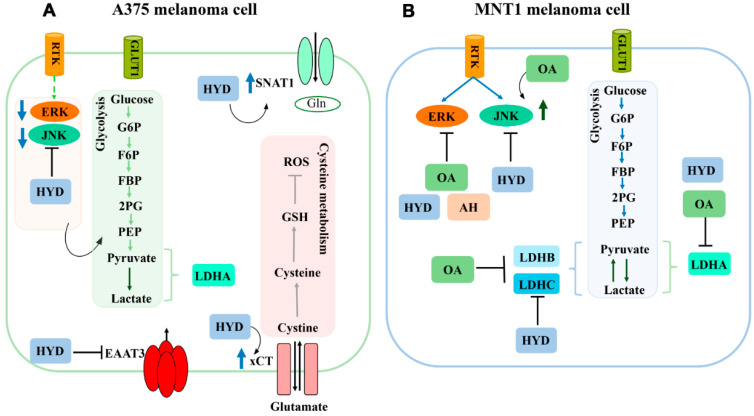Figure 4.
Schematic illustration summarizing the specific effects of oleic acid (OA), homovanillyl alcohol (HA), and hydroxytyrosol (HYD) on key metabolic pathways activated in A375 and MNT1 melanoma cell lines. (A) Hydroxytyrosol treatment seems to have a significant effect on A375 cells, reducing total JNK and phosphorylated ERK levels, and consequently decreasing the glycolytic rate via PKM2 inhibition. This compound also increased SNAT1 and xCT expression, probably in order to activate alternative mechanisms of energy production and detoxification in an attempt to resist the cytotoxic stimulus induced by hydroxytyrosol. EAAT3 downregulation could suggest that these cells are less dependent on the transport of l-glutamate, l-aspartate, and d-aspartate. (B) In MNT1 cells, hydroxytyrosol also reduced total JNK and phosphorylated ERK levels. In addition, homovanillyl alcohol and oleic acid decreased ERK phosphorylation. The glycolytic rate of this melanoma cell line was also affected by hydroxytyrosol and oleic acid treatments.

